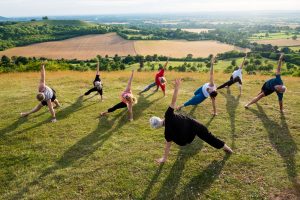The daylight saving time (DST) weekend is almost here for most of Canada, and you may be feeling happy and excited about the days getting longer. But with the gift of added hours of daylight comes the dreaded loss of an hour of sleep.
The confusion that DST can create for our bodies can not only impact our sleep, but also our physical activity and sedentary behaviours. Getting too little sleep leads to a lack of energy, which then leads to more sedentary behaviours and less physical activity. This results in reduced health-related quality of life and poorer mental and brain health.
DST has been proven to take a toll on people living in Canada. For example, did you know that when the clocks spring forward an hour, there’s an increase in heart attacks? Or that some research shows that motor vehicle crashes increase on the first Monday of DST?
Instead of spending your time and energy worrying about the impending stressors linked to DST, focus on what you can control and some of the wonderful benefits that the additional hours of daylight provide.
5 health benefits of daylight saving time (DST)
Despite all the downsides of DST, there are also some great perks that the extra hours of daylight offer:
- The added sunlight boosts your body’s supply of vitamin D, a nutrient and hormone that helps your body absorb and retain minerals that are critical for building bone.
- It can lower your blood pressure, which can reduce your risk of cardiovascular disease.
- It can improve your sleep, meaning you’ll have more energy to get active.
- It can help regulate your immune system, so you can reduce your chances of getting sick.
- Sunshine encourages people to get outside and move more, supporting active lifestyles.

However, remember that sun safety is also important (even outside of the summer months). For more information about how you can enjoy the sun safely, check out this information from the Canadian Cancer Society.
The great DST debate
For the parts of Canada that observe DST, there is much debate about whether it’s here to stay or whether we’ll move on from it. Let’s consider the options up for debate:
- Permanent daylight time – Moving the clocks forward in the spring and leaving them that way for the whole year. Although it would mean getting longer days, many experts argue that getting more evening light and less morning light throws off our circadian rhythms. In Canada, permanent daylight time is currently only observed in northwestern B.C., Creston, B.C., Yukon and most of Saskatchewan.
- Year-long standard time – What we enter when we move our clocks back an hour in the fall. While it gets darker earlier, we get light in the morning, which supports our melatonin levels and circadian rhythms. Currently, Southeastern Labrador, Nunavut’s Southampton Island and two communities in northern Ontario are on permanent standard time.

Where do you stand on this great debate? Do you think we should do away with DST or keep it?








